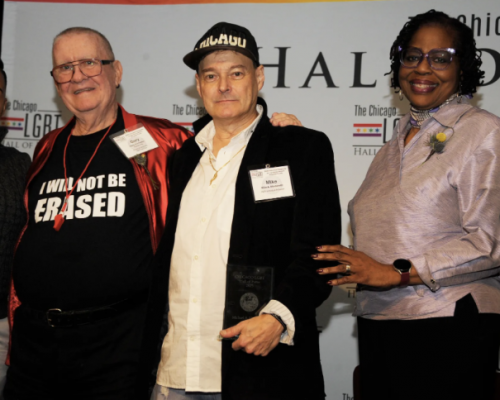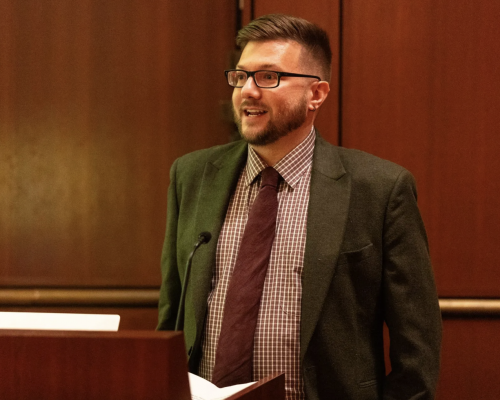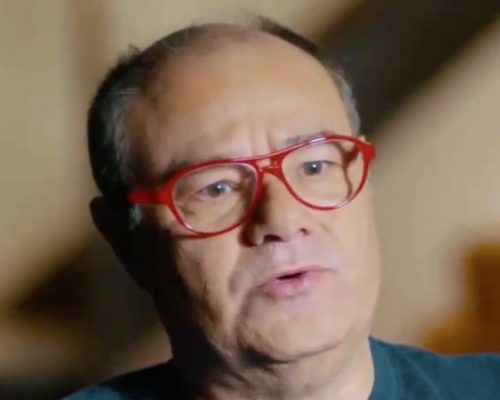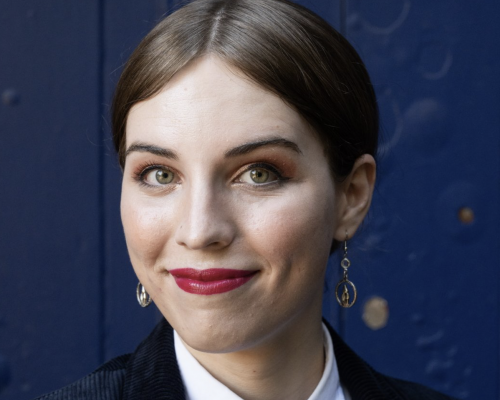NLGJA convention kicks off with discussion of trans coverage and inclusion
by Chuck Colbert
CHICAGO — More than 300 LGBT news industry professionals and allies attended the National Lesbian & Gay Journalists Association’s (NLGJA) annual convention and 10th LGBT Media Summit, a four-day gathering held this year August 21-24 at Chicago’s landmark Palmer House Hilton. The theme was “Breaking Barriers.”
During the main convention, attendees heard keynote speakers, panelists, and workshop leaders address a variety of topics, including diversity coverage of the LGBT community, the intersection of activism and religion, coming out in professional sports, and trends in social media.
A one-day summit focusing solely on LGBT media featured two plenary sessions, one on how to better cover transgender persons and issues and another on the future of journalism funding. Breakout sessions focused on HIV/AIDS coverage in LGBT media, the future of lesbian media, out athletes and sports reporting, African Americans in LGBT media, and the future of blogging, social media, and mobile reporting.
Windy City Times publisher and executive editor Tracy Baim, co-chair of the LGBT Media Summit, was pleased with the day’s proceedings.
“All the panelists brought their A game,” she said. “The transgender plenary panel kicked off the day fantastically. Also the funding plenary was really informative. I felt like the way foundations are now funding journalism was interesting for me to hear, how it has changed just in the last two years, what they fund — infrastructure versus projects. I didn’t realize those changes were happening. So throughout the day, I was surprised what I was learning even though I knew the panelists and read a lot about them in organizing the summit.”
Baim said that an overarching goal for the summit was to make it as diverse as possible. “I think a goal for the media summit next year would be even more diversity,” she said, suggesting “a whole track of transgender workshops. This year’s plenary only touched the tip of the iceberg.”
Transgender journalists panel
The opening plenary, “Transgender Journalists and Transgender Coverage in LGBT Media,” was moderated by Fiona Dawson and featured journalists Gretchen Rachel Blickensderfer, Christina Kahrl, Parker Molloy, and Andre Perez.
During the 90-minute discussion, panelists agreed generally that transgender media presentations might well have reached a “tipping point” in 2014 with Laverne Cox’s appearance on the June 9 cover of Time magazine. Cox is perhaps best known for her role in the Netflix series “Orange is the New Black.”
Nonetheless, Chicago-based sports journalist Kahrl, who works for ESPN.com as an editor and writer, sounded a cautionary note.
 |
LGBT Media Summit opening plenary panelists
(left to right) Parker Molloy, Gretchen Rachel Blickensderfer,
Andre Perez, Christina Kahrl, and moderator
Fiona Dawson (photo: Hal Baim) |
“We are definitely at a critical moment in terms of trans visibility in both the media and in society at large,” she said. “But the question is whether society’s pivoting from this moment is going to be entirely positive. It’s not. Progress is not linear. It’s going to be a situation that we have seen time and time again, backlash, negative responses, negative coverage, [and] not just in mainstream media newsrooms, but also unfortunately in LGBT media newsrooms.”
On the positive side, Chicago-based Perez, facilitator at StoryCorps, pointed to Windy City Times and a “series of different transgender reporters” with “representation on the front page and middle pages and back page and throughout that publication. That’s not something I see in other kinds of media. We are at a moment of explosion of visibility, and I think that has good consequences, but I am not sure I can point to a lot of specific stories that are done right.”
For her part, Blickensderfer, an account manager and writer for Windy City Times, noted, “A lot of trans people are writing their own blogs” or “putting their stories on You Tube,” or “self publishing. A lot of these are unedited and terribly honest.”
A transgender essayist and advocate from Chicago, Molloy added, “There is no one transgender narrative, and the media is still struggling to gather that.”
To improve coverage, she said, stories ought to move beyond “trans people talking about trans people and making money off of being trans.” While there is nothing wrong with that, Molloy explained, “You have trans lawyers, doctors, and teachers.”
Added Kahrl, “The notion that trans people have careers that anybody would want is an important message; and something that again both needs to be [communicated] so that people making hiring decisions understand that, yeah, I can hire trans people, trans people have talent. That’s a positive message that people need to hear more about and see more of as opposed to just trans people just talking about themselves and their own issues.”
A focus on transgender coverage at the media summit notwithstanding, a variety of diversity issues rolled over into the main convention when the opening panel tackled hits and misses in covering the LGBT community.
Cathy Renna, who moderated that session, said without a doubt, “The biggest issue for media — mainstream, LGBT media, and social media — is diversity. The issue is really about inclusion. Are we really looking at the way our community reflects the larger culture and our issues? There is no such thing as a gay issue or LGBT issue anymore. They are human rights issues [with] so many intersections, and we are missing so many stories. I think it was perfectly natural that everything we talked about at [the media summit] came up during the main convention discussion about diversity.”
Renna is a senior executive vice president at Target Cue, LLC, a consultancy that specializes in providing public relations and marketing communications services to not-for-profit organizations seeking to reach highly-defined audiences.
Reactions and takeaway messages
Renna offered her thoughts on key takeaway messages from the LGBT Media Summit.
Even as “mainstream media continues to do a better, more sophisticated job covering LGBT issues,” she said, “the LGBT media still needs to be on the vanguard. The LGBT media continues to struggle financially because it is in a very competitive environment. As I said before, as coming from someone who is not a journalist, [the community] really needs to advocate and support LGBT media because it continues to be the first place to go to when you really need to know what’s going on and what issues are emerging.”
For Michelangelo Signorile, an important takeaway message is “that we have to keep growing and that we can’t think that we have achieved something and that it’s all done. I think there has been an idea all across the gay, lesbian, bisexual, and transgender world, particularly with marriage equality, that we have arrived when in fact, no, there are a multitude of issues. It’s just that transforming, taking on a culture is a much bigger issue than getting rights.”
A host on Sirius XM Radio and editor-at-large for Huffington Post, Signorile recently completed a book, “It’s Not Over: Getting Beyond Tolerance, Defeating Homophobia, and Winning True Equality,” to be published next spring by Houghton Mifflin.
Asked for his thoughts on the LGBT Media Summit, Signorile said what interested him most “was the changing landscape of the media and how younger people are coming to this changed landscape and really mastering a lot of these skills. … A lot of those editors on the blogs and social media are younger. So how do we transform … LGBT media in this era? Also, the issues are changing. How do we cover transgender issues in a way that really brings light to the subject rather than the heat and sensationalism, which we have seen in the past on gay issues, seen it change a bit, but not yet on transgender issues.”
Sarah Toce, founder and publisher of The Seattle Lesbian, said being “all in this together” was an important takeaway message.
“We are all doing this for the same reasons, but obviously we all have our various segments and why we are special at what we do,” she explained. “To come together at a conference like this and be able to share that knowledge is invaluable in getting to know better what LGBT media can do.”
Toce and Baim, along with Trish Bendix, a Los Angeles-based writer and managing editor of AfterEllen.com, led the panel discussion, “The Future of Lesbian Media,” during the summit.
One mainstream press reporter, Jeremy Fox of The Boston Globe, found the NLGJA gathering important for his work. “One of the great things about the LGBT Media Summit, and the conference more generally, is hearing so many voices that I don’t usually get to hear while trying to serve a wider audience that may not have a good understanding of issues in the LGBT community or even know that there is not one monolithic community, but many smaller communities that recognize common struggles and try to support one another,” he said.
“The transgender panel in particular was a rare opportunity to hear thoughtful — and forceful — perspectives on how that community is covered and how transgender journalists navigate their worlds,” said Fox, vice president of NLGJA’s Boston chapter. “It’s unusual to hear one trans person exploring those issues in public, so to hear four perspectives and to hear the panelists exchanging ideas and comparing experiences was enlightening. It got me thinking about how I can cover transgender issues for wider audiences in a way that respects those unique personal experiences and doesn’t impose a one-size-fits-all narrative about what it means to be trans.”
A main takeaway for Mark King, an HIV/AIDS activist, educator, and blogger, was “simply the thrill of being in the company of other writers,” he said. “This can be an isolating profession, writing our best and then releasing it to the blogosphere, often relying only on trolls and contrarians for feedback. So, to spend time in person with other writers is a joy and a real inspiration to me. And, as somewhat of a niche writer who focuses primarily on gay men, HIV and addiction issues, it was enlightening to learn from the many workshops focusing on other important issues that I feel certain will find a place in my future work.”
King, who moderated a panel discussion on HIV/AIDS reporting, offered a critique of LGBT media’s coverage of the epidemic. “We, as LGBT media, are doing a disservice to our community by attributing the lack of in-depth HIV coverage on factors such as reader ‘fatigue,’” he said. “There are compelling, new stories to tell. HIV criminalization, the inanity of the PrEP ‘debate,’ and the slow but sure melding of HIV positive and negative status are remarkable and untold stories. In the absence of adequate coverage, the vacuum is filled with misinformation and fear, which has plagued us since the earliest days of the AIDS epidemic, and frankly, we should know better.”
King received NLGJA’s award for excellence in blogging for “My Fabulous Disease.”
Next year, the National Lesbian & Gay Journalists Association celebrates its 25th anniversary. The convention is scheduled for Sept. 3-6 in San Francisco.
TOP STORY
Volume 16
Issue 6







